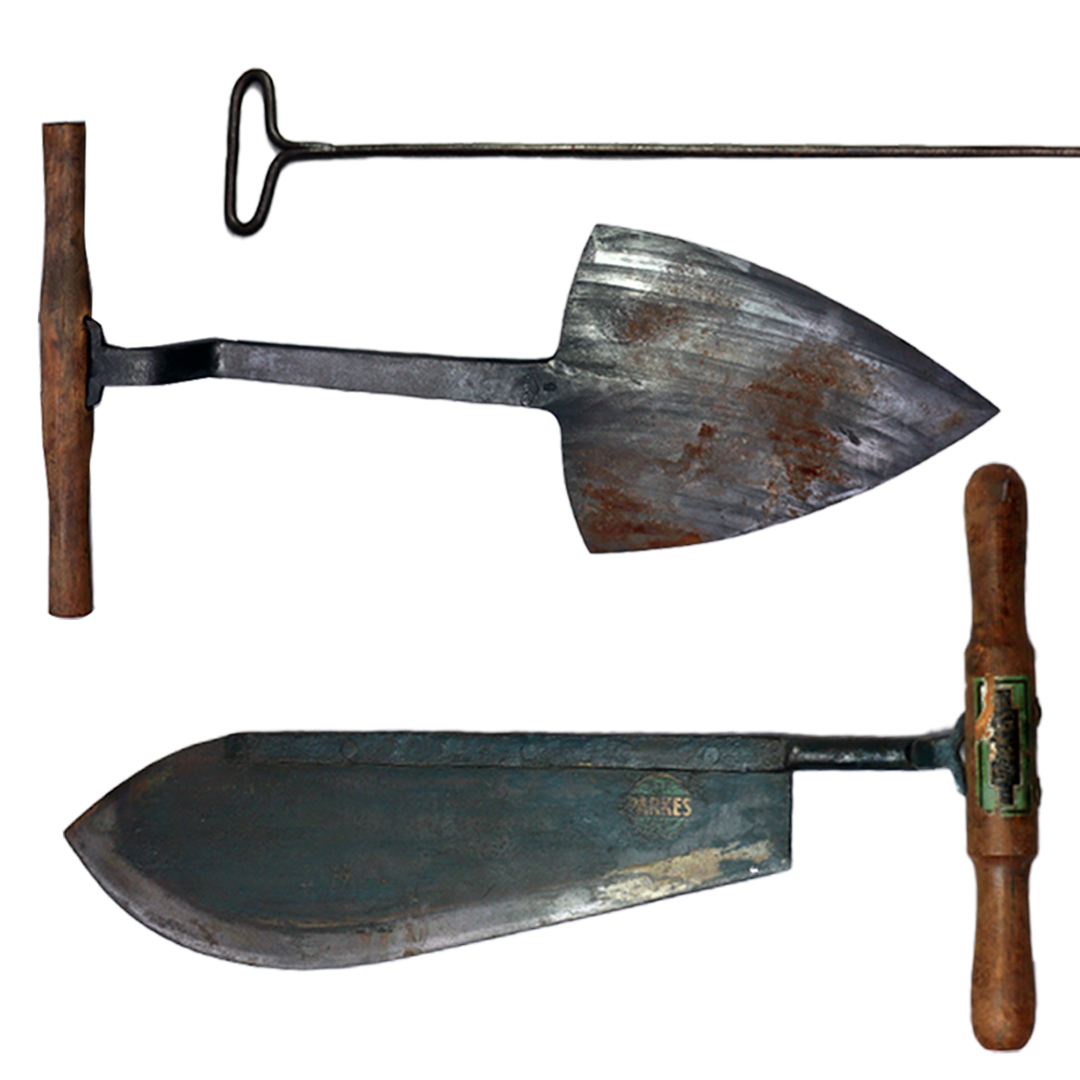Harvest Tools
Description
Despite its proud history for rapid urban and economic growth during the industrial revolution large areas of Lancashire remain rural and have always relied on agriculture. Hand-tools such as these were used for cutting and moving compacted hay, a crucial animal feed to keep livestock healthy through the long winter months.
Grasses and other legumes would be cut by hand with a scythe and then left to dry in the field, hopefully making hay while the sun shines. Once dry it would be gathered up into a stook or haystack and left in the field. The dry hay then compacts within the stack protected from the elements by the very outer thatch layer and lasts as feed until the spring. The spade and knife are highly developed tools with offset handles allowing them to make vertical cuts down the face of the hay to remove sections as needed.
Blocks of hay could be very dense and depending on the moisture content very heavy. The hay needle, a 3 ft iron spike with an eye at one end, could be used to plunge deep into the hay at an angle forming a handle to lift by or used to secure ropes when covering or transporting the hay by waggon. Lancashire is famous for its sayings, and while it is not claimed that either reference to haymaking in the sun or looking for needles originate from the county, it is easy to see how they might. Rather than the unrealistic image of searching for a dress-makers needle in a huge pile of straw, it is far more likely that the phrase 'looking for a needle in a haystack' comes from a simple iron spike and a careless farmhand moving the hay.
Details
- Accession number
- LANMS.1973.75.39
- Category
- Agriculture
- Materials
- iron
wood
On display
50 Objects Exhibition at Helmshore Mills Textile Museum 6 June - 31 October 2025. Search www.lancashire.gov.uk for Helmshore Mill opening times.
